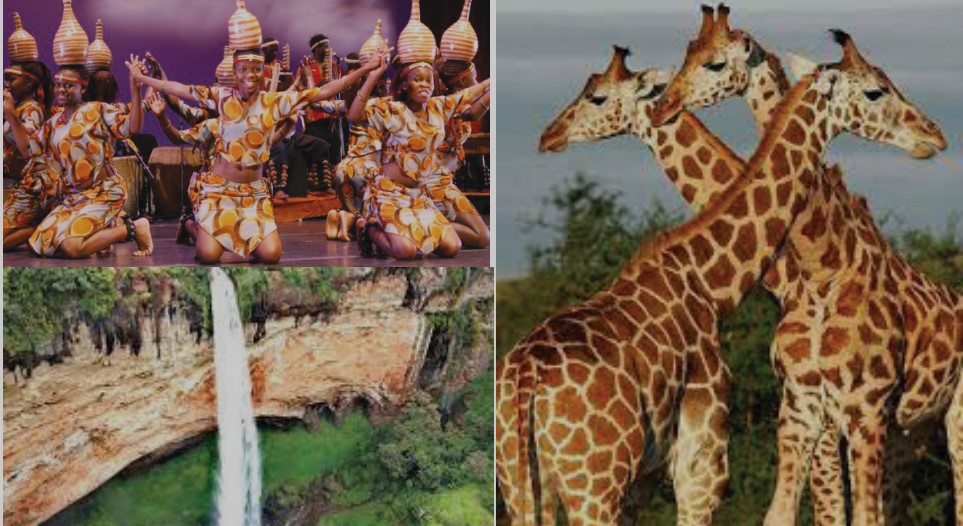It should be noted that such an incident could happen anywhere, any time and to anyone. The motives of these attacks vary, but all point out to one factor; that the target is never the tourists.

Mr. Benjamin Abazimana
Teaching Assistant/Department of Tourism Management
The evening of Tuesday, October 17, 2023 was a dark one for Uganda, especially for the tourism industry. What seemed a memorable safari for two foreign tourists and their guide turned to be the last journey on earth after a cowardly attack from a group of unknown rebels assailants whose intentions are yet to be unknown.
Speculated to have been ADF rebels from the Eastern Congo who are entering Uganda, this is at a time when Uganda’s defense forces are wiping out ADF groups that have for a long time been a
menace to the Uganda Democratic Republic of Congo border.
It should be noted that such an incident could happen anywhere, any time and to anyone. The motives of these attacks vary, but all point out to one factor; that the target is never the tourists.
On Tuesday, March 02, 1999, Rwandan Rebels kidnapped and killed some foreign tourists from a group that was at a gorilla trekking camp near the Congo border. Mark Ross, an American born tour operator narrated the supposed motive of the rebels, “” The rebels said they wanted to destabilize Uganda causing an economic crisis in the area and to let the whole world know that there is a war going on here.” (www.theguardian.com, Tue 2 Mar 1999 22.21 EST).
This region has since then been safe, including being a key selling point for 52% of the population of the Endangered Mountain Gorilla. On the same note, on the Tuesday of April 02, 2019, a 35-year- old American tourist, Kimberley Sue Endicott and her guide were separated from a group that had a Canadian couple, and kidnapped, only to be released safely five days later after.
It is believed that the perpetrators were given a good amount of wanted ransom money. Such incidences are regrettable. However, their gravity and level at which they affect the perception of tourism safety and security depend on the narrative, rate and speed at which narration is spread on a large scale. The information often distorts consumer choices and motivations to travel, especially when their image of destination is confused.
On a global note, we have had incidences such as these, including mass-killings in popular destinations. However, the concern of the destination runners in these destinations is never channeled towards an image that appears to be a travel concern.
These matters are usually taken as an internal security issue that is usually meticulously handled, while controlling the narrative to protect the image and save international travel concerns.
Even the events that shocked the world were handled with a trajectory that turned the attention from the crime scene to how to rebuild the destination over such scars. Such should be a lesson to Uganda.
Quoting the words of Brian Kagoro, a Pan Africanist, he says, “We do not control data, we don’t control digital platforms; we therefore are not controlling narrative in both analogue and digital forms.” This indicates the level at which the destination image and promotion under such unfortunate circumstances is very fragile and needs to be handled carefully and patriotically.
Media has a tendency of exaggeration of narrative and the level depends on which media house or source reports the story for marketing or political reasons and such information is often shaped towards crying foul to the referee, and not focusing on pursuing the game. With social media all circulating different opinions and views on the matter, the depth of an incident is framed by secondary receivers in different ways.
While the unfortunate killing of tourists and a guide creates a safety concern, it does not overshadow the fact that we remain positive.
The reaction towards matters as these is related to the scenario of a teacher who displays a white paper with a black spot and asks the students what they see. All attention is put in the black spot, and not the rest of the white paper.
Such risks are waves that hit the bigger ship, and as said before, could happen anywhere in any destination.
The focus should therefore be on the bigger picture, the Pearl of Africa that continues to grow at the front-line of the Equatorial savannah and Tropical endowments giving life to varieties of wildlife that offer the best safari experience in this naturally and culturally diverse paradise.
This richly blessed land prides herself with open savannah where the Big 5 fight for rights over the ecosystem, with tropics diffusing sounds of over 1000 bird species, primates, and the dense forests that are home to the famous endangered Mountain Gorillas all evenly distributed in our 10 National parks and over a dozen 31 game reserves. Not forgetting the terrain standing tall in misty clouds with standing peaks like the snowcapped Rwenzori, and valleys and gorges washed by beautiful rivers and rapids, crowned by magnificent falls, an image that matches an adventurer’s dream.
Uganda’s tourism profile and diet offer is poem that rhymes symphonically with and traveler’s wish and the destination continues to grow better and faster than ever and be lest assured that it is still and will continue to be a safe and ideal destination and will reinforce herself from these waves stronger than ever.



